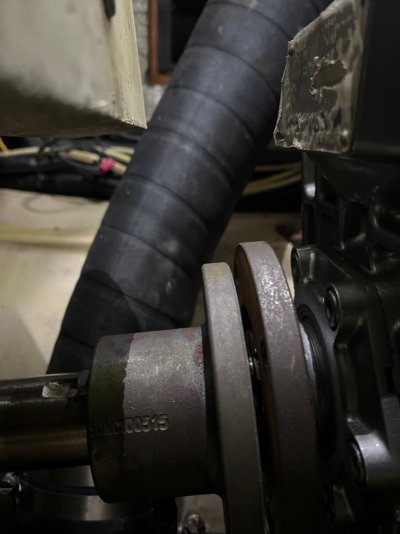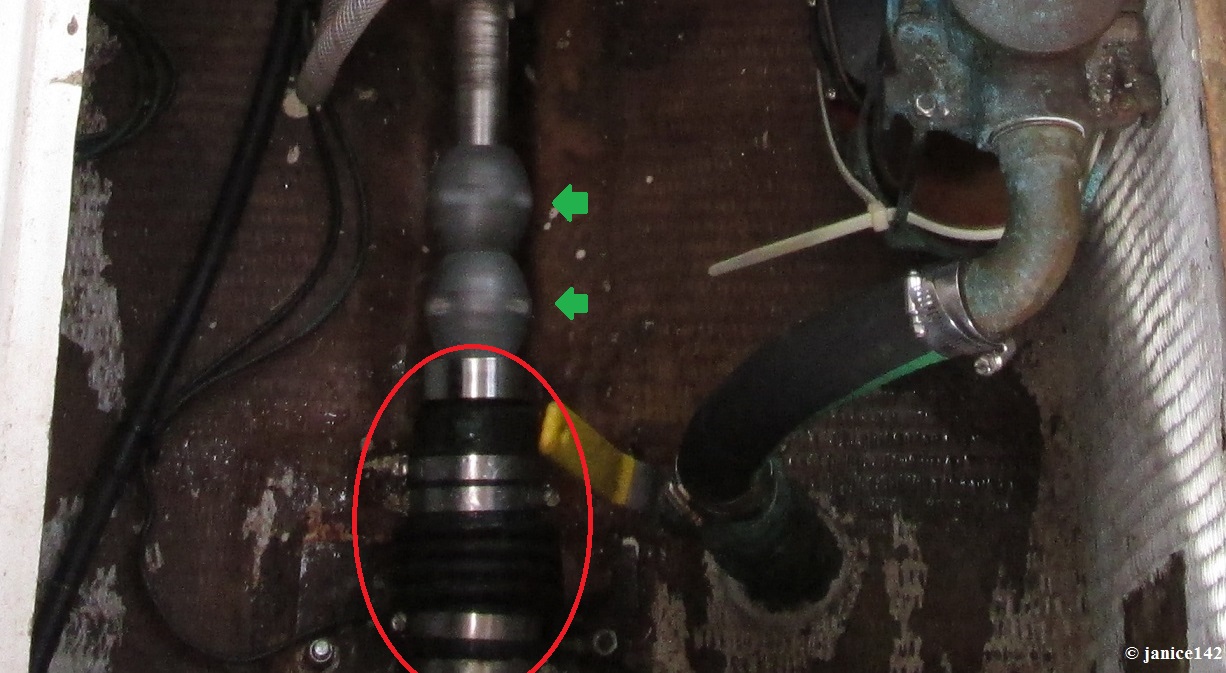Northern Spy
Guru
- Joined
- Feb 5, 2012
- Messages
- 4,075
- Location
- Canada
- Vessel Name
- Northern Spy
- Vessel Make
- Nordic Tug 26
Couplings in industry use fitted or expansion bolts. You actually ream the holes to size and use a machined fitted bolt. Or the bolt expands with a collar into the coupling holes to essentially make a rigid unit to transmit torque.
Our crappy little marine couplings use the friction of the coupling halves and the clamping force from properly torqued bolts to hold it together. Suboptimal.
But, since they are slow turning, low torque, and (should be) inexpensive they generally work.
But if there is any slop in the coupling bolt holes, the bolts are undersized, or they are not adequately torqued to achieve a proper tension and clamping force, the bolts will eventually fail in shear.
There is a lot of room for improvement for recreational marine couplings, but no company or standard seems to feel the need to improve.
Grab a bunch of the "same size" bolts and measure their shoulder diameter with a micrometer or even a caliper. Amazing to see the variation.
Optimally the flange faces would have zero runout and the flanges would be clamped together and drilled. Bolts would be machined with a shoulder to a tight tolerance, and the coupling would be reamed to fit the bolts.
Really not a lot of work, and is standard fare for a millwright.
The problem with this is as the boat is worked on at an average yard, the flange is whacked with a hammer by a boat "mechanic", or the bolts are swapped out for some off the shelf, and all gains are lost.
While I often side with Voltaire that "perfect is the enemy of good" . But in this case of marine couplings, it is pretty easy to turn good into bad, or they really aren't good enough to begin with.
Our crappy little marine couplings use the friction of the coupling halves and the clamping force from properly torqued bolts to hold it together. Suboptimal.
But, since they are slow turning, low torque, and (should be) inexpensive they generally work.
But if there is any slop in the coupling bolt holes, the bolts are undersized, or they are not adequately torqued to achieve a proper tension and clamping force, the bolts will eventually fail in shear.
There is a lot of room for improvement for recreational marine couplings, but no company or standard seems to feel the need to improve.
Grab a bunch of the "same size" bolts and measure their shoulder diameter with a micrometer or even a caliper. Amazing to see the variation.
Optimally the flange faces would have zero runout and the flanges would be clamped together and drilled. Bolts would be machined with a shoulder to a tight tolerance, and the coupling would be reamed to fit the bolts.
Really not a lot of work, and is standard fare for a millwright.
The problem with this is as the boat is worked on at an average yard, the flange is whacked with a hammer by a boat "mechanic", or the bolts are swapped out for some off the shelf, and all gains are lost.
While I often side with Voltaire that "perfect is the enemy of good" . But in this case of marine couplings, it is pretty easy to turn good into bad, or they really aren't good enough to begin with.



